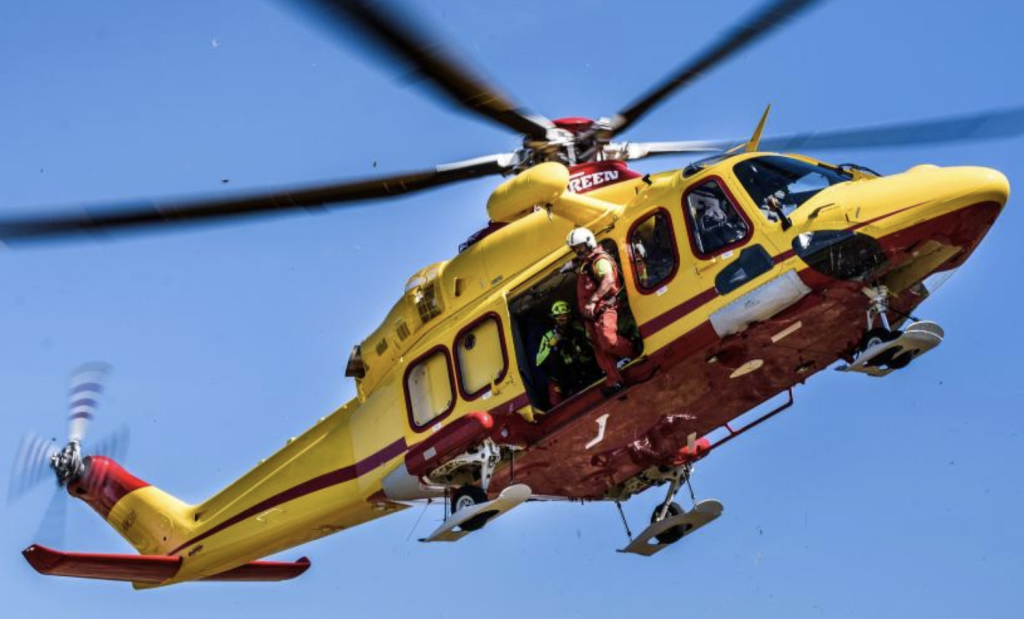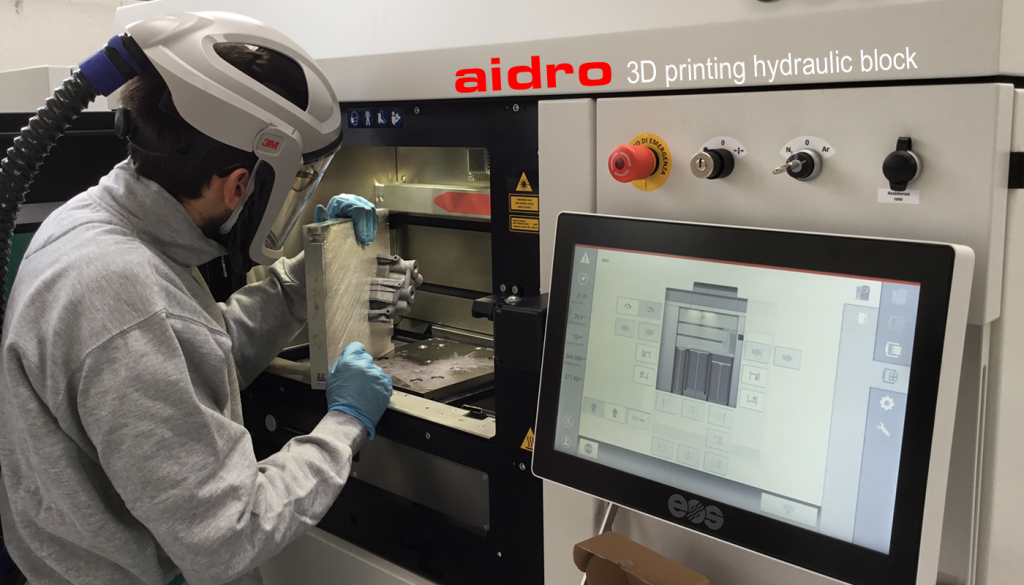Italian defense contractor Leonardo has qualified Desktop Metal subsidiary Aidro as a supplier of 3D printed parts for its helicopters.
Traditionally a developer of hydraulic and fluid power systems, Aidro has now become one of two suppliers to receive Leonardo’s Declaration for Qualification of Process for Additive Layer Manufacturing. Since gaining accreditation, the firm has begun working with Leonardo to create flight-ready parts for its rotorcraft, a lineup that includes high-performance civil, parapublic and military helicopters.
“The components we are producing for Leonardo are parts that require extensive knowledge in managing fluids and fluid power, which has always been Aidro’s main competence,” explains Aidro CEO Tommaso Tirelli. “This is a great opportunity for our company to demonstrate how end-users like Leonardo can leverage additive technologies to achieve significant weight savings and reduce the number of components.”
“We are proud to be selected by Leonardo Helicopters as a qualified supplier of 3D printed aluminum flight parts.”

Aidro’s shift into 3D printing
Founded in 1982, Aidro is best known as a manufacturer of the hydraulic components used within the industrial, energy and aerospace sectors. Until as recently as 2017, the firm’s workflow revolved around traditional production methods, however, since adopting powder bed fusion (PBF), it has managed to achieve several design breakthroughs.
Using the technology, Aidro is now said to manufacture hydraulic valve blocks, spools, high-pressure manifolds, heat exchangers and even steel watches, while iterating their designs to improve end-performance and drive down their cost.
The company also utilizes 3D printing to manufacture industry-specific parts like rotary valve bonnets and servofly T4/1 adapters, which address the needs of energy, maritime and aerospace customers respectively. The latter, which are SLS rather than PBF 3D printed, found fame in 2019 when they were used to help a disabled pilot fly again, via the creation of a cockpit ‘plug-and-fly’ control system.
In more recent events, Aidro has been acquired by Desktop Metal, in a deal that has seen it become a fully-owned subsidiary of what is now a rapidly-expanding business. Late last year, when the takeover was completed, Tirelli said he was “thrilled” about the deal, adding that he believed it would enable his firm to “disrupt massive industries,” and gain a foothold in the oil, gas and aerospace industries.

Leonardo’s deepening AM adoption
Having been qualified by Leonardo as a 3D printed part provider, Aidro has now started working alongside a defense contractor with a history of adopting additive manufacturing within aerospace settings. In 2020, for instance, it was revealed that the company uses Roboze ARGO 500 systems to produce heat and chemical-resistant carbon fiber-filled parts, while achieving reduced costs and lead times.
With this in mind, Leonardo’s latest collaboration with Aidro has effectively seen it expand its adoption of the technology, in an attempt to realize both part consolidation and cost savings in its helicopter division. While the two firms haven’t disclosed the exact nature of the components being produced, they’re understood to be made from aluminum, and relate to the management of fluid power systems.
Given that his business has a strong background in these areas, Tirelli says the companies are not just working together on the design of such parts, but in sharing best practices, particularly when it comes to addressing high-end use-cases.
“In addition to supporting Leonardo with design, Aidro also organizes training sessions and knowledge-sharing on additive manufacturing with its employees,” adds Tirelli. “This joining of forces and continuous process of mutual learning becomes essential in such a fast-changing environment to be able to design, create and recreate products of high value.”
“With our shared roots in Northern Italy and the combined expertise of our teams, we truly believe the sky’s the limit with Leonardo.”
Renovating rotorcraft with 3D printing
As it turns out, 3D printing and scanning have been deployed several times before in the optimization, reverse engineering and production of helicopter parts. In the past, the Thermwood Corporation has used its Large Scale Additive Manufacturing technology to 3D print a 20-foot helicopter blade mold for Bell Textron.
On a more industrial scale, Airbus has also begun 3D printing latch shafts for A350 aircraft at its Donauwörth facility in Germany. Produced at pace using an EOS M 400-4 3D printer, the helicopter door parts are said to be both 45% lighter and 25% cheaper than their conventional counterparts, without sacrificing on quality.
Back in 2020, engineers at the US Army Aviation and Missile Command and Wichita State University even went so far as to create a full digital twin of a Black Hawk helicopter. In doing so, the team aimed to establish a digital part catalog for the craft, through which the US Army could 3D print some of its harder-to-source components in future.
To stay up to date with the latest 3D printing news, don’t forget to subscribe to the 3D Printing Industry newsletter or follow us on Twitter or liking our page on Facebook.
For a deeper dive into additive manufacturing, you can now subscribe to our Youtube channel, featuring discussion, debriefs, and shots of 3D printing in-action.
Are you looking for a job in the additive manufacturing industry? Visit 3D Printing Jobs for a selection of roles in the industry.
Featured image shows Leonardo’s AW139 helicopter. Photo via Leonardo.



